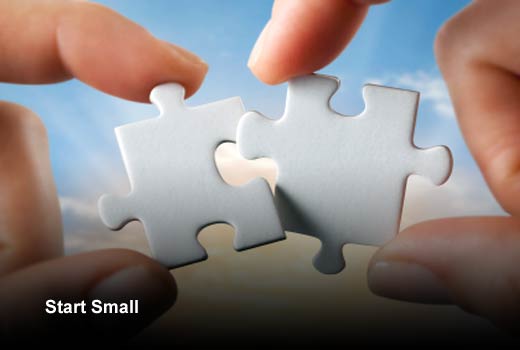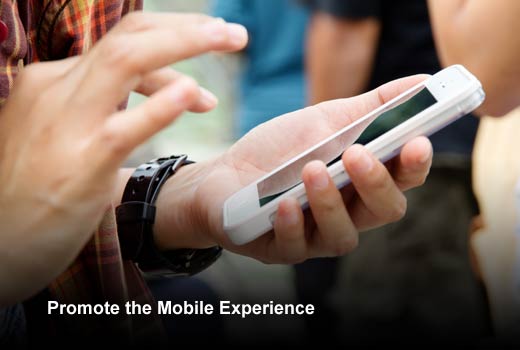For retailers and brands, Bluetooth beacons offer a powerful new way to engage with in-store shoppers at the precise moment they are considering a purchase. Beacon marketing campaigns have proven to have a dramatic impact on shopper behavior, with 73 percent of shoppers saying that beacon-triggered content and offers significantly increased their likelihood to purchase during a store visit.
As consumers increasingly demand seamless omnichannel shopping experiences, beacons are helping retailers and brands bridge the shopper journey across online and offline touchpoints. In addition to enriching the in-store shopping experience, beacons can also be used to generate valuable data for optimizing online and mobile marketing efforts. From powering personalized ad campaigns to delivering deep insight into customer behaviors, beacons are fast becoming an essential infrastructure component for CIOs at leading retailers everywhere.
Successfully implementing beacon technology requires a well thought-out plan and careful execution. In this slideshow, Swirl has identified nine tips for CIOs and CMOs working together to design effective beacon programs that enhance the consumer shopping experience and drive measurable business results.

Beacons: Driving Measureable Business Results
Click through for nine tips CIOs and CMOs can use while working together to design effective beacon programs that enhance the shopping experience and drive measureable business results, as identified by Swirl.

Define Your Goals
The first step in launching a beacon marketing program or deploying your first beacon is to define a clear set of business goals. Keeping business goals in mind enables retailers to target specific consumer behaviors with their efforts. With goals guiding your beacon marketing strategy and campaign execution, you’ll be well positioned to influence consumer behavior and generate meaningful results. Examples of business goals that can be used to guide beacon marketing efforts include increasing overall purchase rate, basket size, store traffic and customer engagement.

Start Small
One of the keys to generating early success with beacons is to start small. Too many beacon-triggered messages can aggravate shoppers, and more beacons mean more complexity to manage at the outset. Especially for retailers who are new to the technology, starting with a small number of beacons in each store allows you to gain practical experience that can then be applied to larger-scale rollouts. For specialty retailers with small store footprints, one beacon per store may be sufficient, while larger multi-brand retailers typically start with beacons in three to five different areas of the store.

Choose Appropriate Beacon Hardware
For retailers with more than 100 stores, beacon battery life and management tools are important factors that should be considered when choosing a beacon provider. Beacons that offer long battery life (greater than three years) can generate significant labor and maintenance cost savings by reducing the need to replace batteries every year. And beacons that offer integrated real-time clocks with standby mode allow retailers to turn broadcasts off during non-business hours, thereby extending battery life by two times or more.

Optimize Beacon Placements
Beacon broadcasts don’t need to cover every square inch of a store. Instead, placements should be planned based on areas of the store where mobile interactions or data collection create value. Common beacon placements include store entrances (where you can deliver welcome messages with offers or prompts to visit specific departments), checkout areas (to trigger loyalty card usage and help measure purchase rates), and major merchandising areas within the store (where you can deliver category-relevant content and offers). Beacons should be placed in such a way that they are unobtrusive, out of the reach of shoppers and with an unobstructed broadcast path. Typically, retailers install beacons on ceilings, above doorways or at the back/underside of the highest aisle display shelf.

Remember the Consumer
Marketers need to keep in mind that smartphones are very personal devices, and marketing to them carries potential risks. While the delivery of highly relevant, location-specific mobile content has the ability to create new levels of shopper engagement, irresponsible or irrelevant beacon messaging can be a source of dissatisfaction for shoppers.
To ensure you’re staying on the right side of the value vs. annoyance line, keep these three rules in mind with every beacon-triggered interaction:
- Be transparent
- Be relevant
- Create value for shoppers
Questions that every marketer should ask about any beacon-triggered content they plan to send to in-store shoppers include: Will it help the shopper make a buying decision? Will it save the consumer time or money? Will it inspire the consumer? Will it improve the overall shopping experience?

When designing beacon-triggered campaigns, remember that the consumer’s primary goal is shopping. Marketing efforts should enhance that experience, not detract from it. In-store mobile marketing campaigns should provide content that is easily digestible and that offers immediate value for shoppers.
General guidelines for designing glanceable media include: one message per screen, highly visual designs, and limited amount of copy with a large font size. Sharing timely advice on style trends, delivering buying tips or offering access to product reviews are great ways to create value and enhance the in-store shopping experience with beacons.

Involve Store Associates
Retail store employees play an important role in beacon marketing efforts. In addition to answering questions that shoppers may have about the in-store mobile experience and the technology behind it, sales associates can also promote mobile app usage and loyalty program participation. Communication and education for store associates is critical to securing their support and advocacy for your in-store mobile marketing efforts.

Promoting in-store mobile experiences is a great way to stimulate new mobile app downloads for shoppers who don’t yet have your app. Use in-store signage and bag inserts to encourage app downloads and updates. Exclusive offers can be used as an additional incentive to encourage first-time use. Your website, customer emails and social media channels are all places where you can let customers know about how your mobile app can be used to enhance the in-store shopping experience.

Test, Measure and Test Again
Retailers launching beacon marketing campaigns should focus on generating early and rapid learning. Once initial performance benchmarks have been established, campaign variations can be developed and tested.
In addition to offers, messaging frequency and content testing, marketers should also begin planning for more sophisticated and targeted campaigns based on factors such as shopper profile, shopper behavior and store region/location.
With the rapid convergence of online, mobile and offline interactions, it’s a wildly exciting time for retailers and marketers. In this new world, CIOs will take center stage in designing and building technology infrastructures that are capable of connecting every customer touchpoint while ensuring the highest levels of data security and consumer privacy are maintained. Beacons are set to play a pivotal role in not only connecting the customer journey, but also building bridges between the IT and marketing functions. It’s going to be fun to watch as this amazing new opportunity unfolds.








